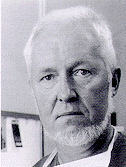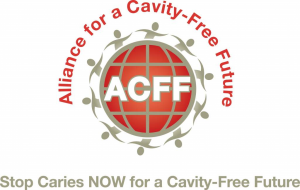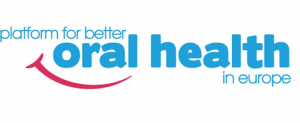
NEWSLETTER Number One March 1996
Stop Press
Membership Commitee Report
Nominations Commitee Report
EAPD Bruges - Update
Proceedings of the Annual Meeting of the Gesellschaft Fur Kinderzahnheil Kunde Und Primarprophlaxe
Bulgarian - Hellenic Meeting
ABSTRACTS AND REVIEWS SECTION
ADVERTISING
 In a few months we will meet in Bruges, Belgium for the 3rd Congress of the European Academy of Paediatric Dentistry. I hope that you are all prepared to go and enjoy the highly scientific programme, the outstanding social activities and a great hospitality. Professor Luc Martens and his team will make this congress another pearl in the row of our congresses. Thank you for all your work.
In a few months we will meet in Bruges, Belgium for the 3rd Congress of the European Academy of Paediatric Dentistry. I hope that you are all prepared to go and enjoy the highly scientific programme, the outstanding social activities and a great hospitality. Professor Luc Martens and his team will make this congress another pearl in the row of our congresses. Thank you for all your work.
In the last message, I presented an invitation to an open discussion on Quality Assurance in Paediatric Dentistry which has met with interest. The meeting will take place on Saturday 8th June from 11 to 12 am. The room will be announced at the Congress. All interested are welcome.
And what has happened concerning establishing the speciality in Paediatric Dentistry in Europe? During a three year period ending in 1998, I have been elected member of the Advisory Committee on the Training of Dental Practitioners of the Commission Europeene. There I represent the expertise from the practising professions in Sweden. This committee has a working party on the training of dentists. At a meeting on 9th November 1995 the committee added some terms of reference to the working party which means that the work now will concentrate on specialisation in dentistry. The terms of reference of interest are:
-
To establish the clinical proficiencies required for the practice of the specialisation in orthodontics in the Member States of the European Union
-
To establish the clinical proficiencies required for the practice of the specialisation in oral surgery in the Member States of the European Union
-
To identify the other specialisations in dentistry existing in the Member States
I will keep in touch with you and report any progress in this very important area.This will be my last message to you as president of our organisation. When I was honoured by the appointment in Athens 1994, I was filled with enthusiasm and ideas about the future and development of the Academy. Now, two years later, I am happy to sum up that we have been developing in a very good way. It has been a wonderful experience.Thank you all on the Board, on the Committees, the councillors and members for outstanding co-operation during my presidency.
Goran Koch
EAPD CONGRESS AT BRUGES 1996
8th to 11th June 1996
Over 350 replies received from 33 countries. 138 abstracts forwarded to the Scientific Committee. Remarkably Eastern Europe is prominently represented with delegates from Poland, The Czech Republic, Slovenia, Kroatia, Bulgaria and Romania. Enrolment forms have come from Australia, New Zealand and Taiwan meaning that a lot of overseas people will attend too! A meeting comparable with Athens 1994 with about 300 delegates, is in sight. Hotel rooms will be despatched on a 'first come, first served' basis.
Further details from the Congress Organiser-Secretary:
Prof. Luc Martens Dept. Paediatric Dentistry De Pintelaan 185 9000 Gent, Belgium-Europe Tel: (+32) 9 240 40 00 Fax: (+32) 9 240 38 51
Current Membership
The membership continues to grow and at the end of February there were 303 members. The numbers and categories of membership are as follows:
ACTIVE 221
ASSOCIATE 35
HONORARY 4
STUDENT 30
OTHERS 13
The category of 'Others' includes dentists who have applied for membership and corresponding members in other organisations (AAPD, CAPD, AuAPD) with whom we have a correspondence for information purposes.
Members in Default of their Subscriptions
There are a small number of members who are in default of their subscriptions for the year 1994. These presently now owe for the years 1994 and 1995. Those not making a payment by April 30th 1996 will lose their membership.
Applications
Application forms are available from the Secretary and members are reminded that forms should be signed by two paid up members. Applications must be in English and be accompanied by a short curriculum vitae of no more than two pages.
*There are still some countries with few members in the Academy
This year, for the first time, the Nominations Committee has been formed and given the task of seeking nominations from members for the various Council and Committee posts that will need to be appointed at the General Assembly next June llth. The Council posts that need to be considered are:
President-Elect (who will become President in 1998)
Secretary
Treasurer
Terms of Office are for two years. In addition the present members of Committees (with the exception of the new Nominations Committee) have been in office for four years. These committees have worked well and completed a great deal of work on behalf of the members. Council decided in 1994 to keep the existing committees but to seek new members in 1996. Therefore the Nominations Committee welcomes nominations for the following Committees:
Membership and Credentials
Education
Constitution
There is a need to consider the appointment of a Budget and Finance Committee and also a Research Committee now that the Academy is growing in size. Nominations are also welcomed for these two Committees. The membership of each committee and the numbers to be appointed are given in the Constitution and each member should have a copy of this booklet. More copies are available from the Secretary.
Research Abstracts
This year there have been over 136 abstracts submitted for consideration by the Scientific Congress Committee.As before, each abstract has been reviewed by a number of scientists and scored on the scale 1.0 (poor),1.5, 2.0,2.5, and 3.0 (excellent). Each abstract has also been designated by each reviewer for presentation as an ORAL POSTER (with discussion) or POSTER (without discussion). Abstracts may also have been rejected if they were badly presented and did not follow the recommended requirements for presentation, if they were of no scientific interest or if they were not in any way related to Paediatric Dentistry The final assessment has been made by averaging the scores of the reviewers.
The judgement of the committee is final. Authors will be advised of the outcome of the assessment of their abstract shortly. This large number of abstracts is very encouraging and indicates that there will be excellent presentations and discussions at the Congress. Such a large number of submitted abstracts shows an increasing importance of the EAPD Congresses in Europe. In size and scope we are now on a level with some much older and prestigious dental organisations in Europe.
Symposia
There will be a number of Symposia presented at the EAPD Congress. Because we are concerned with the dental care of children throughout Europe we shall be featuring an important special symposium on the Dental Needs of The European Child. This will be led by the President, Professor Goran Koch, and will feature three speakers, from Sweden (Dr Brolin), The Netherlands (Dr Kalsbbek) and Denmark (Professor Peterson). Dental Caries is declining in many areas of Europe but not in all. There is also some preliminary evidence that even where caries has declined this has now ceased or significantly slowed. In addition there is also a worrying sign that for some populations of pre-school children, the decay (d) component is increasing while the filled (f) component, of the overall mean dmfs scores, is declining.The indication is that there will be an increasing reluctance,for financial reasons, on the part of general dental practitioners to restore decayed primary teeth. With these great financial pressures on dentistry in general throughout Europe, the Dental Needs of the Child need particular attention. This timely Symposium will provide a forum for discussion of these problems.
Proceedings of the Annual Meeting of the
Gesellschaft Fur Kinderzahnheil Kunde Und Primarprophlaxe
The Annual Meeting Of The Gesellschaft Fur Kinderzahnheil Kunde Und Primarprophlaxe in the Deutsche Gesellschaft fur Zahn-,Mund-, und Kieferheikunde, was held in Leipzig on 3rd and 4th November 1995. For the first time such an important event took place in the new Bundeslaender providing lots of opportunities for dentists of the new Bundeslaender to meet their colleagues from the old Bundeslaender.
The addresses given by Professur Klaus Pieper (first Chairman of the Society), by Dezernent Dr JΟrgen Zimmerman (Administrator for Health and Social Affairs at the Leipzig Town Council), Dr Siegwart Peters (Vice President of the DGZMK) and by Professor Alfred Treide (Managing Director of the Centre for Dental, Oral and Orthodontic Health at Leipzig University and Scientific head of the meeting) pointed out that children, their health care and its promotion have to play an outstanding role in our modern society. After careful consideration two main topics were selected for discussion: 'epidemiology of dental disease in children and'the handicapped child'. They reflect the most important current problems in dental care of the younger generation.
Epidemiology of Dental Disease in Children
Epidemiological surveys are of fundamental importance for the development of prophylactic and therapeutic care strategies. Can the tendency of caries decline - as it has been observed in other industrial nations - be found in the Federal Republic as well? This question was to be discussed. In the two main papers read by Professor Walter KΟnzel, Erfurt, and Professor Klaus Pieper, Marburg, the scientists agreed that a caries decline has become more than just a hope, it has become an epidemiological reality in Germany. In the 12 year olds a marked increase in DMFT values could be registered. This seems to be the result of a whole system of prophylactic measures. However there is a drop of bitterness: the percentage of naturally healthy teeth in the whole primary teeth population has fallen and there is an increasing number of failing treatments. On this background, Dr Gisela Graessler and Professor Gisela Hetzer, Dresden, drew dentists' attention to primary teeth as well as permanent teeth.
Continuous and age-specific forms in prophylactic curative treatments are required. A study on the effectiveness of young patients' dental care in Berlin (Dr Andrea Lehmann et al) supports these ideas of an integration of a young patients' dental clinic with age-specific measures. PD Dr Ulrich Schiffner et al, Hamburg, state in the rΕsumΕ that prophylactic group measures in childhood should be accompanied by and continued in decent individual care. Looking back on 30 years of collective, group and individual prophylactic treatment, Dr Martin Buettner, Basel, stated that fluoride prophylactic measures are most essential. This holds true for both collective prophylaxis, as in the fluoridation of drinking water, and for group and individual prophylaxis measuresThe papers on epidemiology were continued in an illustrative poster presentation. There was general agreement that the number of teeth requiring dental treatment and the number of naturally healthy teeth depend on the time and quality of preventive measures. In a concurrent poster session, caries risk and its predictability by bacterial andnon-bacterial parameters were discussed. Non-bacterial saliva characteristics accompanied by microbiological studies can contribute to a differentiation of caries risk on an individual level. In both sessions social risk factors were discussed extensively, as in the papers by Professor Annerose Borutta et al, Erfurt, and Wolfgang Kaplick et al, Celle..
The Handicapped Child
The second day was exclusively devoted to the topic of the handicapped child. It is essential that an access to continuous and prophylactic treatment must be guaranteed to protect the patients concerned from further diseases resulting from existing damages. PD Dr Dipl -Psych Almut Makuch compared the psychological development of so-called normally healthy children with specific and typical forms of damage and their effects on personality development of handicapped children which may aid approaches to treatment. Regarding the social environment, PD Dr Dieter Muessig, Erlanger, described development of the face under the influence of different forms of handicaps and resulting myotherapeutic measures. Professor Manfred Waurick, Halle, elucidated the interrelation between physical and mental handicap and their effects on the masticatory organs, taking the symptoms of cerebral paresis as an impressive example, as the consistency and retention time of food in the mouth can be seen in connection with the development of the manoeuvrability of tongue,cheeks and lips.
Another important subject was specific therapeutic measures for handicapped children. The papers covered antibiotic endocarditis propylaxis for children with innate heart defects (Walter Knirsch et al, Berlin) as well as dental treatment under intubation anaesthesia (Dr Andreas Filippi et al, Gieben). In the following poster session Dr Sabine Rostock reported on paediatric dental treatment for patients with cheiloghathouranoschisis. Further aspects of this disease were discussed in studies on the registration of gingival malformation and jaw development as well as changes in enamel composition.
Free Topics
In a separate poster session a large variety of free topicswere offered.Most of the papers were concerned with problems of preservation and care of primary and permanent teeth damaged in accidents (Kurt Ebelseder et al, Graz: Joerg Handschel, et al, Muenster: Jango Pohl et al, Gieήen: Egbert Koerperich et al, Berlin). The free papers presented in the block session covered mainly aspects of filling therapy in primary teeth (Dr Ariane Reeka et al, Munich; Dr Norbert Kraemar et al, Erlangen). In a following seminar conducted by Dr Norbert Kraemar the topicality of this subject was emphasised. All in all the three seminars offering topics relevant to practising dentists were highly appreciated. The great demand reflects the interest in improving the patients' treatment in the surgery and clinic.
To sum up, the meeting in Liepzig could help to stimulate discussion and everyday treatment.
Almut Makuch
The 1st Bulgarian-Hellenic Meeting held by the Paediatric Dentistry Societies of the 2 countries was held in Sandanski, Bulgaria on 17-19 November. About sixty Paediatric Dentists and General Practitioners working with children, from each country attended the Meeting. The Meeting was composed of two parts. The first dealt with the presentation of the educational system of each country: under- and post-graduate. The second dealt with the role and contribution of the specialty of Paediatric Dentistry in the extent of the two National Health Systems in Greece and Bulgaria
The speakers from Greece were: Professors Baltas, Kouvelas, Louloudiadis, Oulis, Papagiannoulis and Dr Viglas, and from Bulgaria Professors Atanassov, Kalbaktchieva, Peneva, Todorova and Sharkov. The Meeting proved to be very productive and enhanced the co-operation between the two neighbouring countries.
The next Meeting will be held in Northern Greece.
Lisa Papagiannoulis
Stephen Fayle
Premature loss of maxillary primary incisors: Effect on speech production.
Ott Gable T, Kummer AW, Lee L, Creaghead NA, Moore LJ. J Dent Child 1995; 62:173-179
This well designed study aimed to investigate the effect that premature loss of primary incisors might have on speech development. Twenty six children, all of whom had all four maxillary central and lateral incisors extracted before age five, were followed up and tested for speech quality and articulation several years later. All had four permanent maxillary incisors present at the time of testing. A group of twenty six similar children, all with a history of normal exfoliation of primary maxillary incisors, were used as controls. The premature loss group produced more articulation errors than the group with normal exfoliation, but this difference was slight and did not prove to be statistically significant. The authors conclude that early loss of primary incisors is unlikely to have any long-term effect on speech development.
Localising maxillary canines using dental panoramic tomography.
Fox NA et al. Brit Dent J 1995;179: 416-420
This paper describes and tests a novel method of localising the position of maxillary canines from dental panoramic tomographic radiographs (DPTs). The technique is based on the principle that the radiographic image of a tooth will become magnified if it becomes further from the film plane and diminished if it is nearer. Based on this, the image of a canine that is palatally placed should look magnified in relation to the image of adjacent teeth, and, conversely, if the canine were buccally placed, its image should appear reduced in size. To test this hypothesis the investigators selected one hundred cases where both DPTs and vertex occlusal radiographs had been taken. The DPT only was jointly viewed by two examiners who subjectively determined the buccopalatal position of each unerupted or partially erupted canine by assessment of the horizontal magnification of the tooth image. The accuracy of this prediction was then calculated using the true position of the teeth as assessed on the vertex occlusal radiograph. The prediction based on the DPT alone was accurate in 76% of cases overall (104 out of 136) and accurately identified 82% of palatally placed canines. The technique was, however, of no value in evaluating root position. The authors conclude that image magnification and distortion on DPTs is a useful guide to the position of the crowns of unerupted canines, but that further radiographic views are still necessary to accurately locate and assess their position.
Comparison of preoperative ibuprofen, acetaminophen, and placebo administration on the parental report of post-extraction pain in children.
Primosch RE, Nichols DL, Courts FJ. Pediatr Dent 1995;17:187-191
The aim of this study was to compare the efficacy of the preoperative administration of ibuprofen, acetaminophen,and a placebo in reducing post-extraction pain in children. Sixty children, aged between two and ten years,requiring primary teeth extractions, were selected to participate. Patients were randomly assigned to receive one of the three pretreatment drugs. Parental reports of each child's pain and use of analgesics during the immediate seven hour post-operative period was elicited by telephone the day after extraction. Thirty five percent of patients were reported to have experienced post-extraction pain. Of these, 52% received post-operative analgesics for pain relief (18% of the total). Although there was a trend toward reduced post-extraction pain as reported by the parents, the preoperative administration of neither analgesic was found to be statistically superior by chi-square analysis to placebo administration.
Pediatric dentist's attitudes regarding parental presence during dental procedures.
Marcum BK, Turner C, Courts FJ. Pediatr Dent 1995;17: 432-36.
The aims of this study were to determine how often Pediatric Dentists permit parental presence in the surgery during children s dental visits, and to investigate the variables which might affect their decision. A questionnaire was circulated to 91 paediatric dentists practising in Florida, USA. 90 questionnaires were returned. The results indicated that within this group of dentists there was an increasing trend towards allowing parents to be present in the dental operatory. During a new patient examination, parents were allowed to be present by 90% of respondents when the child was four years old or younger and 79% of the respondents when the child was older than four. Parents were less likely to be admitted during treatment procedures, 40% of dentists excluding parents of children four and under and 47% of dentists excluding the parents of older children. Pediatric dentists who excluded parents exhibited significant agreement with certain statements, including "wastes time", "disrupts the child" and "makes dentist uncomfortable".
Fissure sealants: A four year clinical trial comparing an experimental glass polyalkenoate cement with a bis glycidyl methacrylate resin used as fissure sealants.
Williams B, Laxton L, Holt RD, Winter GB. Brit Dent J 1996;180:104-108.
The aim of this study was to compare the retention and cariostatic properties of a new experimental 1ow viscosity glass polyalkenoate cement (a development of Fuji III, G C Dental) with those of a second generation bis GMA fissure sealant (Delton, Johnson & Johnson) over a four year period. A half mouth study design was utilised, a total of 860 sealants being applied to newly erupted first permanent molars in 228 children. Each individual had one material applied to first molars on one side of the mouth and the other material to first molars on the other side. Of these children 157 were reviewed at two years and 117 were reviewed at four years. The glass polyalkenoate was only fully retained in 12 teeth (4%) at two years and 9 teeth (4%) at four years. In contrast retention of the bis GMA sealant was 79% at two years and 61% at four years. In spite of this difference in retention, no significant difference in cariostasis could be demonstrated between the two materials. The authors conclude that this suggests that glass polyalkenoate cements may produce a cariostatic effect even though their retention is poor, and that this effect may be related to the ability of these materials to act as a "fluoride reservoir".
The Handicapped Child
A. Makuch, Centre for dental, oral and orthodontal health at Leipzig University
Having tried to define and also to relate the concepts of "handicap" and "damage", which are treated in recent literature in different ways, we give an introduction into the topic "handicapped children / young people". The psychic development of so-called normal and healthy children is compared with specific typical forms of damages, and their effects on the personality development are described. In which fields is compensation possible to make up for a deficiency of cognition, of relations of the individual to reality and of practical and mental activity in preventive and therapeutical measures shall be pointed out for the clinically practising dentist.
"THE MEDICALLY COMPROMISED CHILD"
The Royal Gollege of Surgeans in Ireland
Stephen's Green
Dublin 2
Friday 10th May 1996
The deadline for application is March 29th 1998
Howeuer early applicatlon is advised
Please return carnpleted application form and cheque to:
Dr Padraig Fleming
department of Child Dental Health
Dublin Dental Hospital
Lincoln Place
Dubixn 2
LEEDS ALUMNI IN
PAEDIATRIC DENTISTRY
Biannual Reunion.
Sunday 9th June 1996
at
Bruges Belgium
In conjunction with the Third Congress of the
European Acaderny of Paediatric Dentistry
The time and venue will be arranged
and will be available at the cngress



